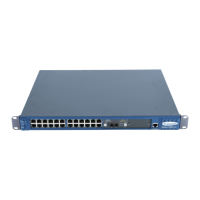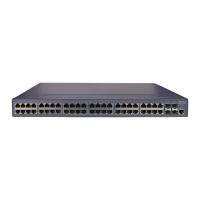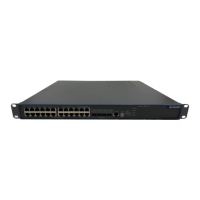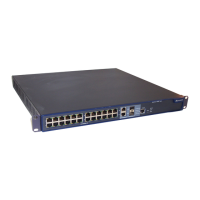Operation Manual – MSTP
Quidway S3900 Series Ethernet Switches-Release 1510 Chapter 1 MSTP Configuration
Huawei Technologies Proprietary
1-27
1.3.4 Timeout Time Factor Configuration
Refer to section 1.2.10 “Timeout Time Factor Configuration”.
1.3.5 Maximum Transmitting Speed Configuration
Refer to section 1.2.11 “Maximum Transmitting Speed Configuration”.
1.3.6 Edge Port Configuration
Refer to section 1.2.12 “Edge Port Configuration”.
1.3.7 Path Cost Configuration
The path cost parameters reflects the link rates on ports. For a port on an
MSTP-enabled switch, the path cost may differ with spanning tree instance. You can
enable flows of different VLANs to travel along different physical links by configuring
appropriate path costs on ports, so that load balancing can be achieved by VLANs.
Path cost can be determined by switch or through manual configuration.
I. Standards for calculating path costs of ports
Currently, a switch can calculate the path costs of ports based on one of the following
standards:
z dot1d-1998: Adopts the IEEE 802.1D-1998 standard to calculate the default path
costs of ports.
z dot1t: Adopts the IEEE 802.1t standard to calculate the default path costs of ports.
z legacy: Adopts the standard defined by private to calculate the default path costs
of ports.
Table 1-22 Specify the standard for calculating path costs
Operation Command Description
Enter system view
system-view
—
Specify the standard to
be used to calculate
the default path costs
of the links connected
to the ports of the
switch
stp pathcost-standard
{ dot1d-1998 | dot1t |
legacy }
Optional
By default, the IEEE 802.1t
standard is used to
calculate the default path
costs.

